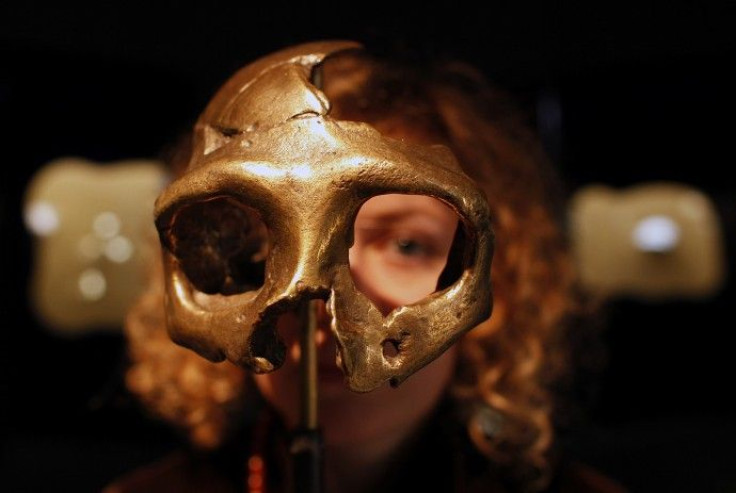Finger Bone Rewrites Story Of Human Origins

Thirty thousand years ago, the human family was pretty crowded.
A finger bone fond in a cave in Siberia appears to have come from a previously unknown variety of human. If confirmed, it could rewrite much of what we know about the history of modern humans - and our relatives.
The bone is from a young girl, and dates to 30,000-50,000 years ago. It was found with a tooth. Scientists have now extracted the DNA from both and sequenced the genome. They found it doesn't match modern humans, nor does it match Neanderthals. That means there was someone else roaming the steppe of eastern Asia.
The people are called Denisovans after the cave where the bone and the tooth were found. The findings are reported in the Dec. 23 issue of Nature. The team leader, Svante Pääbo of the Max Planck Institute for Evolutionary Anthropology in Leipzig, Germany, also worked on the Neanderthal genome, which was published earlier this year.
By comparing the Denisovan genome sequence with the genomes of Neanderthals and modern humans, the researchers found the Denisovans were cousins to the Neanderthals, descended from the same ancestral population that had separated earlier from the ancestors of present-day humans.
The study also found evidence of Denisovan gene sequences in modern-day Melanesians, suggesting that there was interbreeding between Denisovans and the ancestors of Melanesians, just as Neanderthals appear to have interbred with the ancestors of all modern-day non-Africans.
The story now gets a bit more complicated, said Richard Green an assistant professor of biomolecular engineering at the University of California, Santa Cruz, in a statement. Instead of the clean story we used to have of modern humans migrating out of Africa and replacing Neanderthals, we now see these very intertwined story lines with more players and more interactions than we knew of before.
The finger bone was found in 2008 by Russian scientists. Pääbo, who had worked with the Russian scientists before, obtained the bone for his research on ancient DNA.
The Denisovans appear to have been quite different both genetically and morphologically from Neanderthals and modern humans. The tooth found in the same cave as the finger bone shows a morphology that is distinct from Neanderthals and modern humans and resembles much older human ancestors, such as Homo habilis and Homo erectus. DNA analysis showed that the tooth and the finger bone came from different individuals.
The relationship between Denisovans and present-day Melanesians was a completely unexpected finding, he said. The comparative analysis, which included genome sequences of individuals from New Guinea and Bougainville Island, indicates that genetic material derived from Denisovans makes up about 4 to 6 percent of the genomes of at least some Melanesian populations. The fact that Denisovans were discovered in southern Siberia but contributed genetic material to modern human populations in Southeast Asia suggests their population may have been widespread in Asia during the late Pleistocene, said David Reich of Harvard Medical School, who led the population genetic analysis.
One reason this population of early humans wasn't recognized before may have been that nobody noticed; before DNA analysis most classification was done by examining the shapes of bones and teeth. That can sometimes be misleading.
The findings also suggest that the original human migrants out of Africa split into two groups. One went to Europe and became the familiar Neanderthals, while the other went to eastern Asia. At the time modern humans left Africa about 70,000-80,000 years ago, they first met Neanderthals in Europe, which left traces of Neanderthal DNA in non-Africans all over the world. But one group later met the Denisovans, and settled in Melanesia.
© Copyright IBTimes 2024. All rights reserved.











